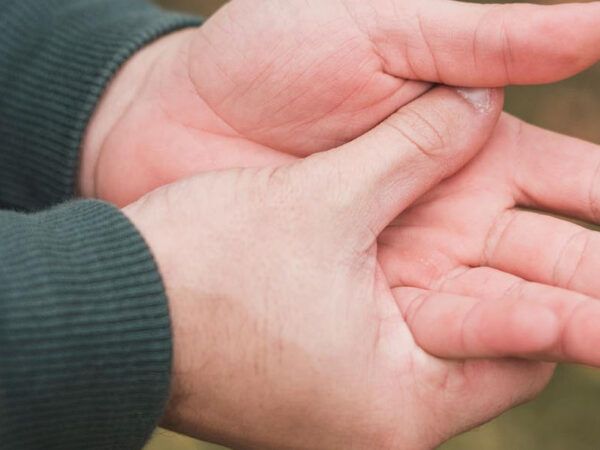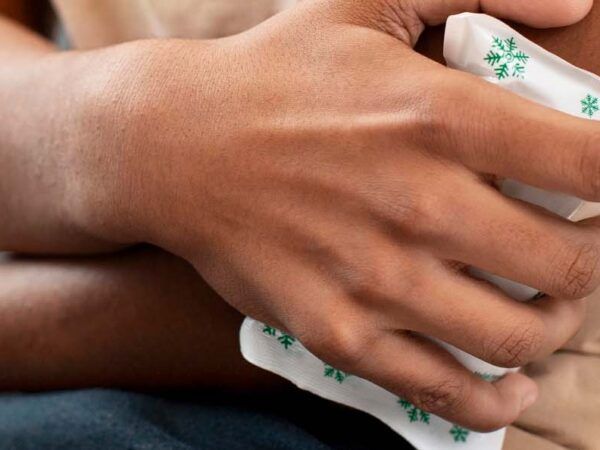What is carpal tunnel syndrom?
Carpal tunnel symptoms include numbness in the fingers and a loss of strength in the wrist and hand. Carpal tunnel syndrome occurs when the median nerve becomes compressed at the wrist. It’s a frequent problem with people who work on computers, athletes, and people with certain predispositions such as arthritis, trauma, or pregnancy.
What are the symptoms of carpal tunnel syndrome?
The most common symptoms are:
- Pain or fatigue in the wrist and fingers.
- Numbness in the thumb, index and middle fingers.
- Difficulty holding certain objects.
In certain cases, the pain can radiate into the arm and even wake the person.
What are the possible causes of carpal tunnel syndrome?
The principle causes are:
- Repetitive movements of the hand or wrist, such as extensive use of a computer mouse or keyboard.
- Certain sports or activities such as golf, tennis, gardening or playing video games.
- Certain diseases such as arthritis and diabetes.
- Certain physical conditions, such as pregnancy or menopause.

Carpal Tunnel syndrome can also be linked to a neck, shoulder or elbow injury that makes the distal nerve (wrist) vulnerable.
Why consult a healthcare professional to heal or prevent carpal tunnel syndrome?
A physiotherapist can help alleviate or heal carpal tunnel syndrome, while an occupational therapist can help prevent it.
Physiotherapy & carpal tunnel
A physiotherapist is usually consulted when pain is already present. A physiotherapist can provide a treatment plan to ease the pain.
The physiotherapist will:
- Identify the cause(s) of the problem.
- Correct the posture.
- Offer exercises to help heal and alleviate the pain.
Occupational therapy & carpal tunnel
In order to prevent or assist in the management of the syndrome, a consultation with an occupational therapist can help by:
- Analyzing the aggravating or risk factors in your overall lifestyle.
- Teaching self-regulation and pain management methods.
- Promoting autonomy with gradual resumption of activities.
- Showing how to use work (or sports) equipment and tools appropriately.
If necessary, the occupational therapist can refer you to a complementary medical or paramedical professional in order to better address the symptoms.
Treatment: What to expect?
At the beginning of the appointment, the therapist will complete an evaluation by asking a few questions concerning your condition to determine:
- History of onset of pain.
- Your current state.
- Your symptoms and their location.
- Your injury and medical history
- Your medication (if applicable).
- Your current and past sports activities.
- Your functional abilities.
- Your goals.
Once the evaluation is completed, the therapist will proceed with observations. First, with a visual analysis of your posture. The physiotherapist or occupational therapist may also analyze your workstation.
The second step is to evaluate the mobility and flexibility of the fingers and wrist, as well as the strength and activation of the flexor tendons. The therapist may also evaluate other areas of the body such as the neck.
Finally, a treatment plan will be created by the therapist. The treatment plan will vary for each individual but may include:
- Muscle strengthening or relaxation exercises
- Changes in your habits, physical work environment or tasks
- Neural and/or joint mobilization (manual therapy by a physiotherapist)
- Wearing an orthosis or splint
- An ultrasound (by a skilled professional)
Workstation Evaluation
The evaluation of your workstation by an occupational therapist may help diminish the risks of injury and help resume or maintain your job
Référence
¹Akalin E, El O, Peker O, Senocak O, Tamci S, Gülbahar S, et al. Treatment of carpal tunnel syndrome with nerve and tendon gliding exercices. American Journal of Physical Medicine and Rehabilitation 2002; 81(2):108-13. [PUBMED: 11807347] ²Bahrami MH, Rayegani SM, Baghbani M, Bafghi MRB. The role of nerve and tendon gliding exercises in the conservative treatment of carpal tunnel syndrome. Journal of Medical Council of Islamic Republic of Iran 2006; 24(1):5-12 ³Field T, Diego M, Cullen C, Hartshorn K, Gruskin A, Hernandez-Relf M, et al. Carpal tunnel syndrome symptoms are lessened following massage therapy. Jounral of Bodywork and Movement Therapies 2004; 8(1):9-14. [EMBASE: 2004016426]



